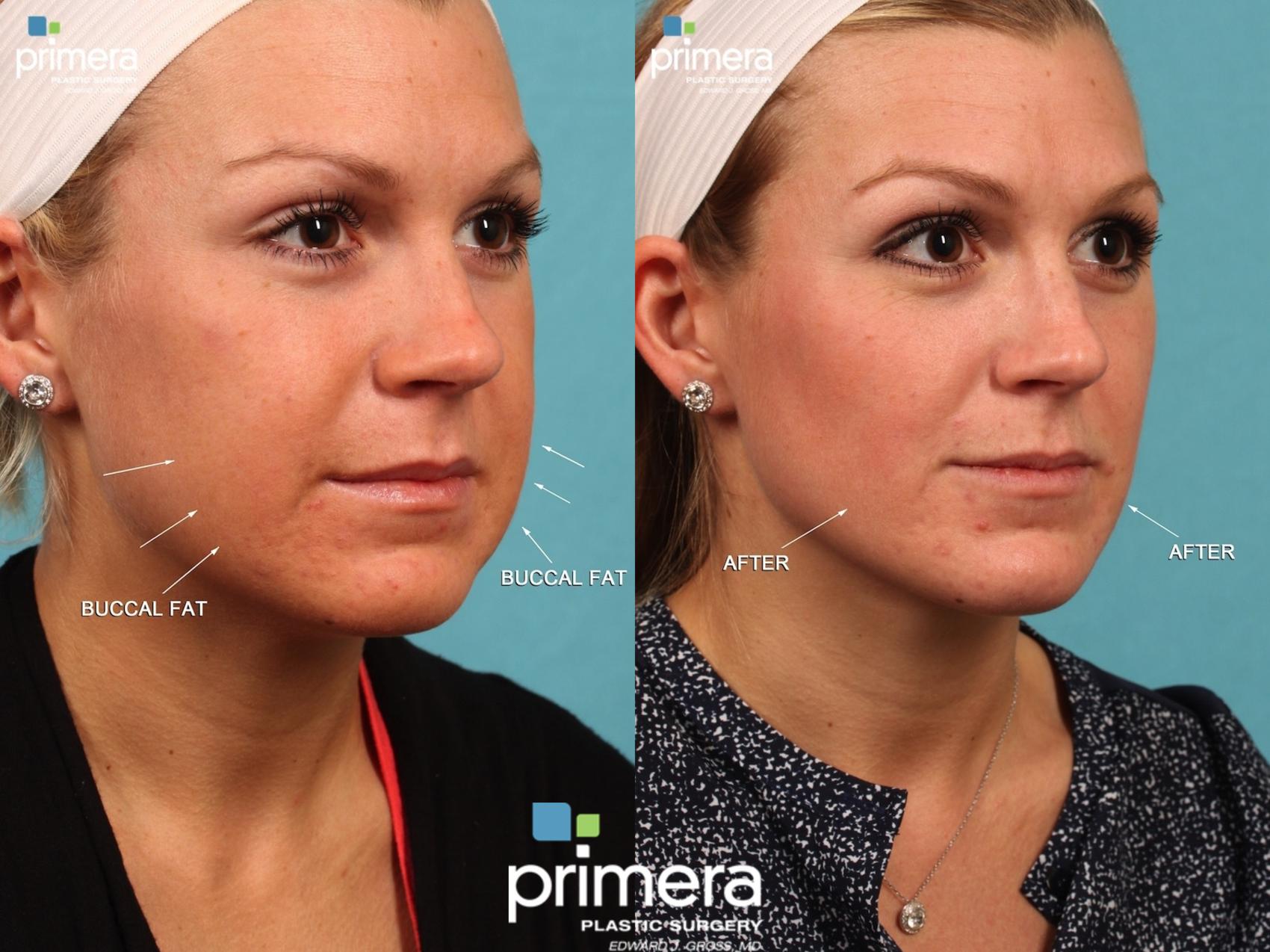Are you happy with your weight but bothered by excess cheek fullness or “chubby cheeks?” Buccal fat removal is designed for men and women looking to add more definition to their facial contours, particularly in the lower face and jawline. It’s about precision and subtlety—bringing your facial proportions into balance in a way that’s noticeable yet naturally you.
What Is Buccal Fat Removal?
Buccal fat removal, also known as cheek reduction surgery, involves the precise removal of excess lower cheek fat to sculpt a more defined facial structure. Ideal for patients seeking balance between their facial and body aesthetics, this procedure can significantly enhance your overall look.
Ideal Candidates for Cheek Reduction Surgery
Hypertrophy, or buccal fat enlargement, makes your face overly round or “cheeky,” contributing to “chipmunk cheeks” or a baby-faced appearance in adults. It can be a characteristic passed down by families and is unaffected by the physical shape of the rest of your body.
Buccal fat removal is particularly suited for patients who want a more angular, contoured facial appearance that diet and exercise can’t achieve.
You might be an excellent candidate for buccal fat removal if you:
- Are in good physical health and maintain a stable weight
- Feel your facial fullness is not reflective of your body’s fitness level or aesthetic
- Do not smoke, ensuring the best healing environment
As we age, the face naturally loses fat. If you’re older or your face is already narrow, the surgery may not be a good fit for you.
Learn more about buccal fat removal and other options to reduce the appearance of chubby cheeks in this related blog post.
A Look at the Buccal Fat Removal Procedure
The process begins with a consultation that includes a discussion of your goals, any medical conditions or allergies, and previous surgeries. We’ll discuss your concerns and goals, and I’ll conduct a computer imaging session to give you a preview of the results you can expect.
The surgery is personalized to fit your unique needs, and involves:
- A concise, outpatient procedure typically completed within an hour under general anesthesia
- A small, hidden incision inside the mouth closed with dissolvable sutures to remove the targeted buccal fat
- A recovery timeline that allows for a quick return to daily activities
Benefits of Buccal Fat Removal
Buccal fat removal can transform your facial aesthetics by:
- Reducing lower cheek fullness and sharpening the jawline for a sleeker profile
- Enhancing the definition of your cheekbones for a more refined facial contour
- Creating a facial structure that better reflects your body’s fitness and your aesthetic goals
Post-Procedure Care and Results
Following the procedure, you’ll receive detailed instructions to ensure a smooth and efficient recovery, including:
- Management of minor swelling, with expectations set for gradual facial contouring over several weeks
- Nutritional guidelines, starting with a soft food diet and transitioning back to normal eating habits
- Recommendations for oral hygiene practices to prevent infection
There are rarely complications from this short procedure and the results can be dramatic. Most patients return to work in 2 to 3 days.
It will take a few weeks for the swelling to fully diminish, but your new, more sculpted facial contours will gradually become apparent.
Schedule Your Consultation
Opting for buccal fat removal is a significant decision. As a double board-certified facial plastic surgeon, my dedicated training in facial procedures and years of experience have equipped me with a nuanced understanding of facial aesthetics that enable me to achieve your desired look. If you’re ready to take the next step, I invite you to our office at (407) 333-3040 or to request a consultation.





Hi,
With the buccal lipectomy.., can fat be removed from the cheekbone area in a similar fashion? I do not actually have much fat in my buccal area but people always ask if I get filler in my cheekbones because they’re so big. When I smile I squeeze a big area of skin.
Thank you
Its most likely buccal fat hypertrophy which can be corrected. Best,